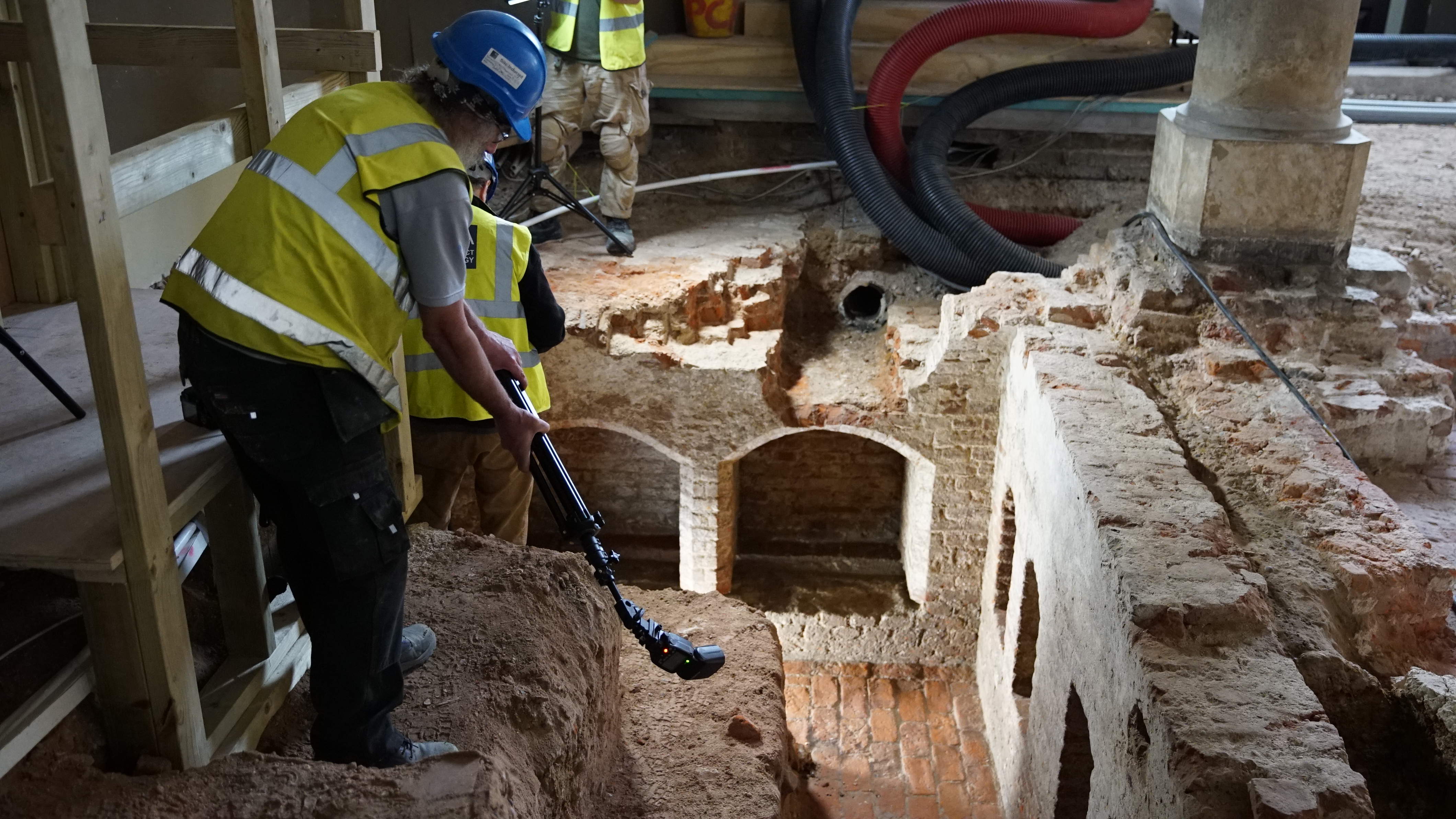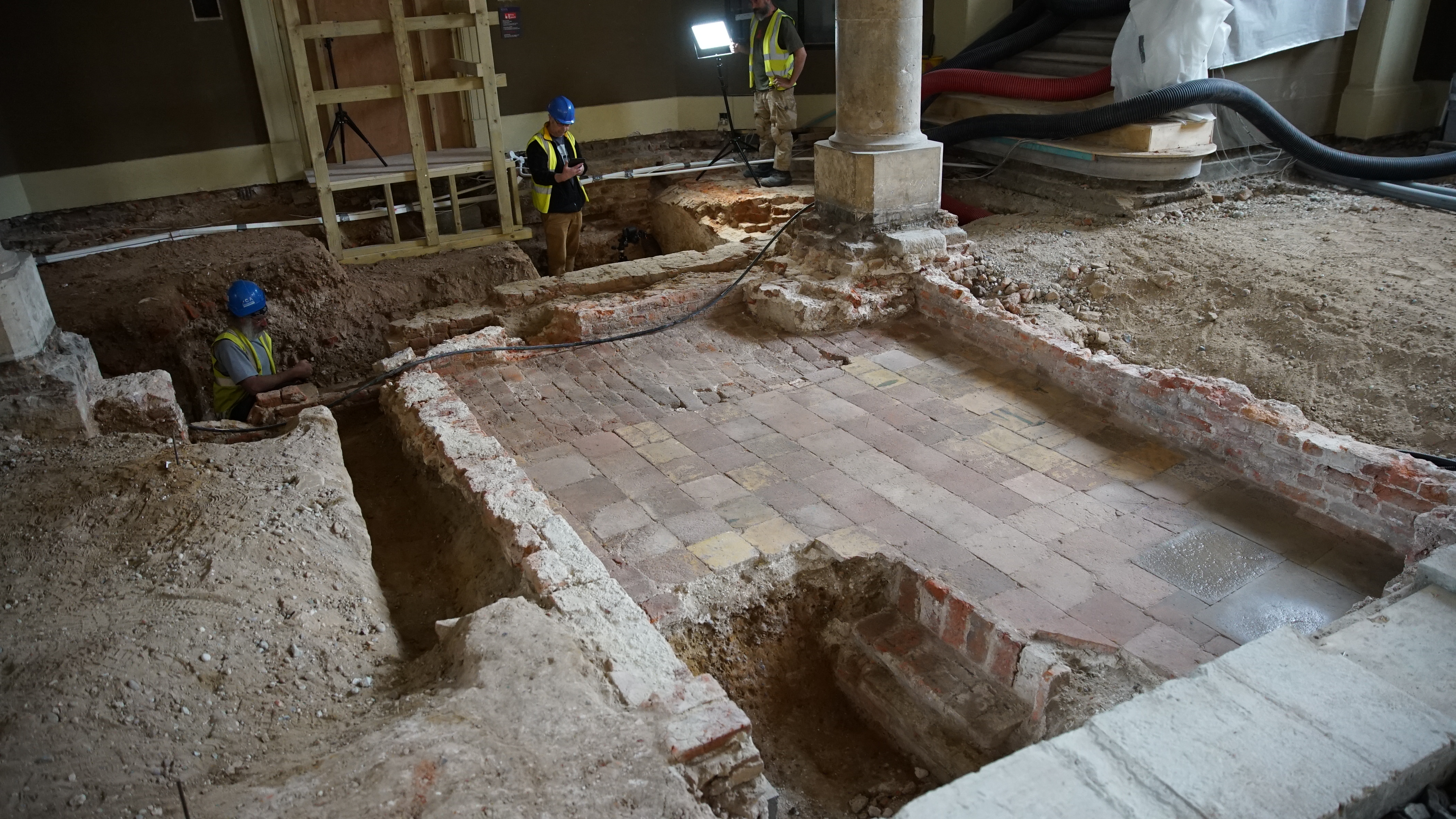Rooms from Henry VIII's Greenwich Palace Discovered

Underground rooms from Greenwich Palace, King Henry VIII's birthplace and a center of courtly life, were discovered earlier this year by a team working on a conservation project at the Old Royal Naval College in Greenwich, England.
In Greenwich Palace, Henry VIII's entourage experienced raucous good times. There was a banquet hall for extravagant feasts, stables for the king's many horses, kennels for the dogs, tennis courts and even places for cockfighting, a bloody sport particularly beloved by Henry VIII's daughter Elizabeth I.
"When the monarch was in residence, there would have been hundreds of courtiers, servants, soldiers, poets, playwrights, diplomats, foreign dignitaries (and spies), clerics, religious zealots and court hangers-on!," Jane Sidell, inspector of ancient monuments for London at Historic England, a public organization that cares for England's historic places, who is part of the team working on the discovery, told Live Science in an email. "The pomp and ceremony, feasts, intrigues, flirtations, courtships of queens, masques, jousting, and pageantry would have been superb." [See Photos of the Underground Rooms Found at Greenwich Palace]
Sidell said she considers Greenwich Palace to be at the heart of British history and one of the central palaces of the Tudor court, the family that ruled the kingdoms of England and Ireland and the principality of Wales 1485-1603, while noting that the Palace of Whitehall in nearby London was the center of Tudor political life. But William Palin, conservation director for the Old Royal Naval College and a member of the team working on the excavation, told Live Science that Greenwich Palace was the most important royal palace in the early 16th century.
In April, while conservators were working on another project at the Old Royal Naval College, they found two underground rooms beneath a modern floor. One room has a well-preserved floor with lead-glazed Flemish tiles, while the other was a vaulted cellar with a brick floor.
"What we found was remarkable for its extent and its level of preservation," said Palin, who pointed out that the discovery comes with the challenge of determining what, exactly, the rooms were used for.

A few of Henry VIII's plentiful courtiers may have resided in the rooms. The rooms may also have been connected to the on-site armory or the nearby friary church, Palin said. Because the vaulted cellar has a low ceiling and recesses in the walls, researchers think this room may have been used as storage. The niches in the wall could have been used to store enclosed baskets, called skeps, that contained bees during the winter in order to protect the bees from the harsh weather, according to a statement by the Old Royal Naval College.
Sign up for the Live Science daily newsletter now
Get the world’s most fascinating discoveries delivered straight to your inbox.
At Greenwich Palace, Henry VIII enjoyed jousting in a courtyard dedicated for this purpose, called a tiltyard. But, life wasn't all fun there for the king. [Family Ties: 8 Truly Dysfunctional Royal Families]
"One of the most serious threats to the Tudor dynasty happened when he was in the tiltyard up there at Greenwich," said Ben Lowe, a professor of history at Florida Atlantic University who was not involved in the discovery. "He was knocked off his horse in full armor and was unconscious for about 2 hours, and they thought he had died or was going to die and he hadn't fulfilled his desire to have a male heir yet."
Some scholars say that, as a result of brain damage, the king's personality changed after he regained consciousness. It's thought that the fall may have turned him into the tyrant he became, Lowe told Live Science.
Greenwich Palace, after falling into disrepair in the 17th century during the English Civil War, was used as a biscuit factory and then as a camp for Dutch prisoners of war. The buildings were subsequently leveled piecemeal and, in the 1690s, replaced by the Royal Hospital for Seamen. These same buildings now house the Old Royal Naval College.
Palin, Sidell and the rest of the team plan to raise the funds to create a viewing space into the underground rooms, giving visitors a glimpse into the dynamic palace that saw the birth and near death of one of England's most charismatic — and ferocious — monarchs.
Original article on Live Science.










